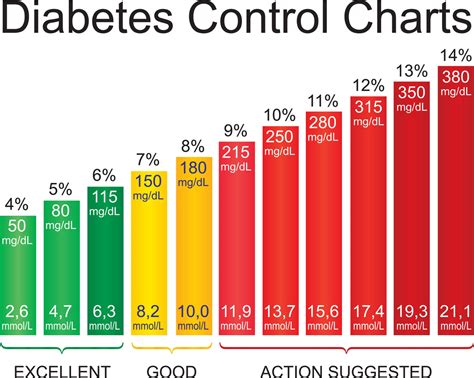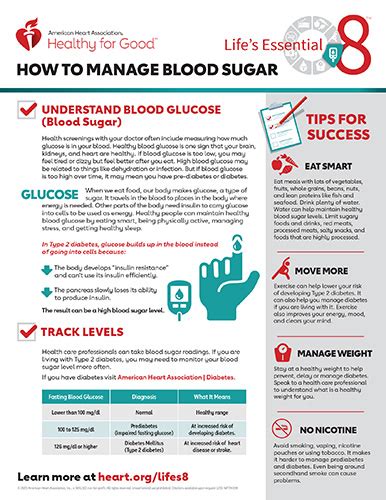Intro
Discover 5 ways high blood glucose affects health, including diabetes risks, hyperglycemia symptoms, and glucose monitoring tips to manage blood sugar levels and prevent complications.
High blood glucose, also known as hyperglycemia, is a condition where the blood sugar levels in the body are higher than normal. This can be a serious health issue if left untreated, as it can lead to a range of complications, including heart disease, kidney damage, and nerve damage. In this article, we will explore the importance of managing high blood glucose and discuss five ways to help regulate blood sugar levels.
High blood glucose is often associated with diabetes, a chronic health condition that affects millions of people worldwide. However, it's not just people with diabetes who need to worry about high blood glucose. Anyone can experience high blood sugar levels, especially after eating a large or sugary meal. The good news is that there are many ways to manage high blood glucose, and making a few simple changes to your lifestyle can make a big difference.
Managing high blood glucose is crucial for maintaining overall health and preventing long-term complications. When blood sugar levels are consistently high, it can lead to damage to the blood vessels, nerves, and organs. This can increase the risk of heart disease, stroke, and kidney disease, among other health problems. Furthermore, high blood glucose can also affect the quality of life, causing symptoms such as fatigue, blurred vision, and frequent urination. By understanding the causes and consequences of high blood glucose, individuals can take proactive steps to manage their blood sugar levels and reduce their risk of developing related health issues.
Understanding High Blood Glucose

Causes of High Blood Glucose
The causes of high blood glucose can be complex and multifaceted. Some common causes include: * A diet high in sugary or refined foods * Lack of physical activity or exercise * Stress and anxiety * Certain medications, such as steroids and some psychiatric medications * Hormonal changes, such as those that occur during pregnancy or menopause * Sleep deprivation * Certain medical conditions, such as polycystic ovary syndrome (PCOS) or Cushing's syndrome5 Ways to Manage High Blood Glucose

Tips for Monitoring Blood Sugar Levels
Monitoring blood sugar levels is an essential part of managing high blood glucose. Here are some tips for monitoring blood sugar levels: * Use a glucometer to track blood sugar levels at least once per day * Test blood sugar levels at the same time each day to track patterns and trends * Keep a log of blood sugar levels to track progress and identify areas for improvement * Work with a healthcare provider to adjust treatment plans based on blood sugar level readingsThe Importance of Lifestyle Changes

Benefits of Lifestyle Changes
Making lifestyle changes can have numerous benefits for individuals with high blood glucose. Some benefits include: * Improved blood sugar control * Reduced risk of related health complications such as heart disease and kidney disease * Improved overall health and well-being * Increased energy levels and reduced fatigue * Improved mental health and reduced stress and anxietyConclusion and Next Steps

We invite you to share your thoughts and experiences with managing high blood glucose in the comments below. What lifestyle changes have you made to manage your blood sugar levels? What challenges have you faced, and how have you overcome them? Your feedback and insights can help others who are struggling with high blood glucose, and we appreciate your participation in this conversation.
What are the symptoms of high blood glucose?
+The symptoms of high blood glucose can include increased thirst and urination, blurred vision, fatigue, and slow healing of cuts and wounds. If left untreated, high blood glucose can lead to more serious complications such as heart disease, kidney disease, and nerve damage.
How often should I monitor my blood sugar levels?
+The frequency of monitoring blood sugar levels depends on the individual and their treatment plan. Generally, it's recommended to monitor blood sugar levels at least once per day, and more frequently if you're taking insulin or have a history of high blood glucose.
What are some healthy foods that can help regulate blood sugar levels?
+Some healthy foods that can help regulate blood sugar levels include leafy greens, citrus fruits, berries, whole grains, lean proteins, and healthy fats. These foods are rich in fiber, vitamins, and minerals that can help slow the absorption of sugar and improve insulin sensitivity.
